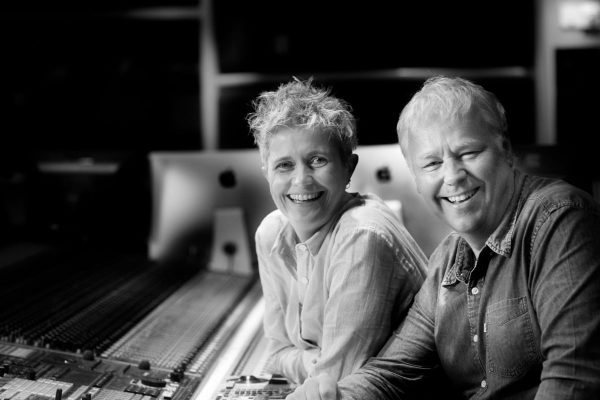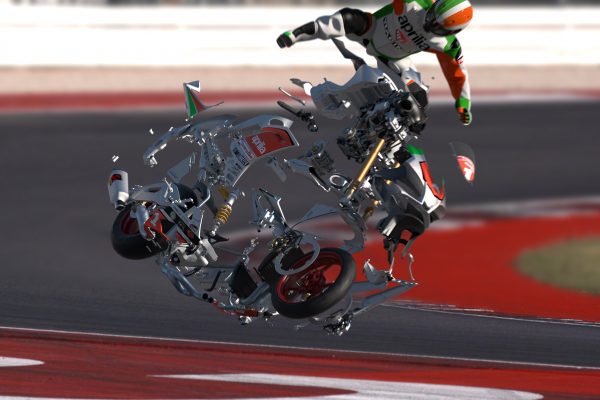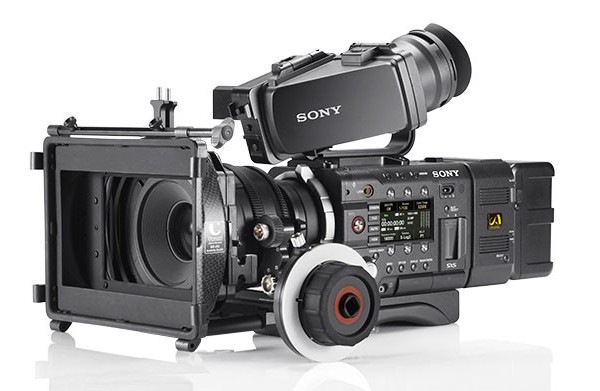Despite taking the reins of one of the most successful movie brands of recent times, director Francis Lawrence didn’t break a sweat when Video&Filmmaker spoke to him in Los Angeles.
By Drew Turney
There was a palpable dread in Hollywood a few years back. The money-printing machines of Harry Potter and Twilight were drawing to a close and studio execs were scrambling for the next big thing to lure the lucrative teen and young adult market.
They found it in Suzanne Collins’ dystopian Hunger Games trilogy. It depicted the world of Panem, an America of some indistinct future where the country is separated into districts, many of them poverty stricken and all under the thumb of a hedonistic, tyrannical ruling elite. To distract the masses from their miserable lot, the annual Hunger Games pitts children from each district against each other in a televised battle to the death.
The worldwide smash had everything from popular rebellion to fighting to Hollywood’s soon-to-be hottest young star in Jennifer Lawrence. With a built-in audience and far fewer expensive effects than most blockbusters, you’d think Catching Fire – the sequel out this month – would almost direct itself after all the original US$78m film returned US$693 globally to studio Lionsgate. But when incoming helmer Francis Lawrence (Constantine, I Am Legend, Water For Elephants) replaced original director Gary Ross, he knew he had his work cut out.
“I was aware of some of that stuff,” he said when Video&Filmmaker asked about the criticisms surrounding the franchise (<Battle Royale> meets Lord of the Flies for Twilight fans, for instance). “I remember being aware of them even when the first book came out. But you can’t think about that when you come on board a movie. I took what I really liked from the first movie and then had my own approach to what I was going to do with this one. The stories are so different there’s a lot of opportunity for that new approach.”
A NEW TAKE
It’s tricky enough adapting a story so many readers have imagined, doubly so when you’re adapting the next part of such a successful franchise. Lawrence didn’t say if he’d spoken to former director Gary Ross about any kind of aesthetic handover, considering Catching Fire to be very much his baby on screen. “It was important for me to be on my own,” the 42-year-old director said. “I saw the first movie and liked it. I re-read the second book even though I’d read the series before, so I had my own take on the movie. I knew there was going to be some aesthetic unity that had to come through, and obviously there was a big portion of the same cast. But I had my take on the costumes and how they’d change and my version of natural photography.”
Even so, both Lawrence and Lionsgate knew the text was sacred. “I treated the book like a Bible,” he confirmed. “That was probably the heart of my pitch to the studio – I wasn’t looking to reinvent the book. Some people want to adapt a loose version of a book with their own spirit and then throw it away. I really thought it lent itself to become the movie.”
A pivotal relationship in the formation of the screen version was meeting Hunger Games author Suzanne Collins. The pair spent three days going through the book and creating a spec sheet that then went to screenwriter Simon Beaufoy. Collins, a TV writer, understood the process of writing for the screen and the structure of a screenplay as opposed to a novel. Lawrence said they gave themselves a lot of latitude to compress certain portions of the book to streamline the running time. “We kept going back to character, especially Katniss, making sure we were hitting all the really specific emotional tent pole moments with her.”
BUILDING PANEM
On a Jaws DVD special edition release from the 1990s, star Richard Dreyfuss (who played ichthyologist Matt Hooper) explained how one of the biggest delays facing the already troubled production off the coast of Martha’s Vineyard was passing sailboats. Cameras faced out to sea to give the impression the Orca was in the middle of the ocean but because the unit was actually close to shore, pleasure craft passing in the distance would stop the shoot for up to an hour at a time while Steven Spielberg and his crew waited for them to leave the frame.
No such problems plague a movie in the modern era. Raw footage from Catching Fire at an Atlanta water park was shot complete with water slides in the background, and beach scenes shot in Hawaii included swimmers and jet skiers in the middle distance – all of it digitally erased in post production.
Lawrence said such digital tinkering was important because the locations were so perfect – even with jet skis and water slides. And, he added, the arena this time is a character in the film, much more so than the fighting ground in The Hunger Games. “One of the big things that’s different is that this arena is much more of an antagonist and a threat than other tributes,” he said. “Because of that there’s a lot less person-on-person fighting and killing than there was in the first one.”
The director also thinks in themes. Where he says the first film was about the horror of violence, he thinks Catching Fire is about “the idea of allies and reliance on others versus the reliance of self”, something that made it even more important that the battleground looked like a dangerous and scary place. In one of the critical scenes, the island where the cornucopia sits starts to spin and Lawrence says this was among the biggest technical challenges. “Anything with the arena was really tricky but the sequence with the spinning island was the trickiest; figuring out how to do it believably with all the water and the light moving.”
EMPIRE CRAFTING
There’s no stopping the Hunger Games juggernaut. Call it cynical, but the final adaptation Mockingjay is being released in two parts – Harry Potter and Twilight -style – in November 2014 and November 2015. The day after we spoke to Lawrence he was leaving to return to Atlanta for the 350-day back-to-back production, which includes nine months of shooting.
Scenes of the Panem capital will also be filmed in Paris and Berlin, which reveals something about the faith Lionsgate has in the film’s success – the far riskier original film was filmed on a smaller, cheaper scale in North Carolina, with the city of Charlotte standing in for Panem’s Capital.
Lawrence claimed there’d never been any talk at the studio to make the film in 3D, and with the amount of work in front of him that’s probably a blessing. Because he’s known for a steadier style than most directors – avoiding the jerky, hand-held aesthetic of many of his contemporaries in I Am Legend – it might make the action easier on both the actors and the audience. One criticism levelled at Hunger Games director Gary Ross was that the motion became a blur for viewers.
“My approach was to do more takes because you can’t hide things when you’re on tighter lenses, shaking around and things being blurred. So we had to do a lot more takes and make sure we were getting really specific images. The beats of the action were much more specific this time just because we’re seeing more clearly.”








